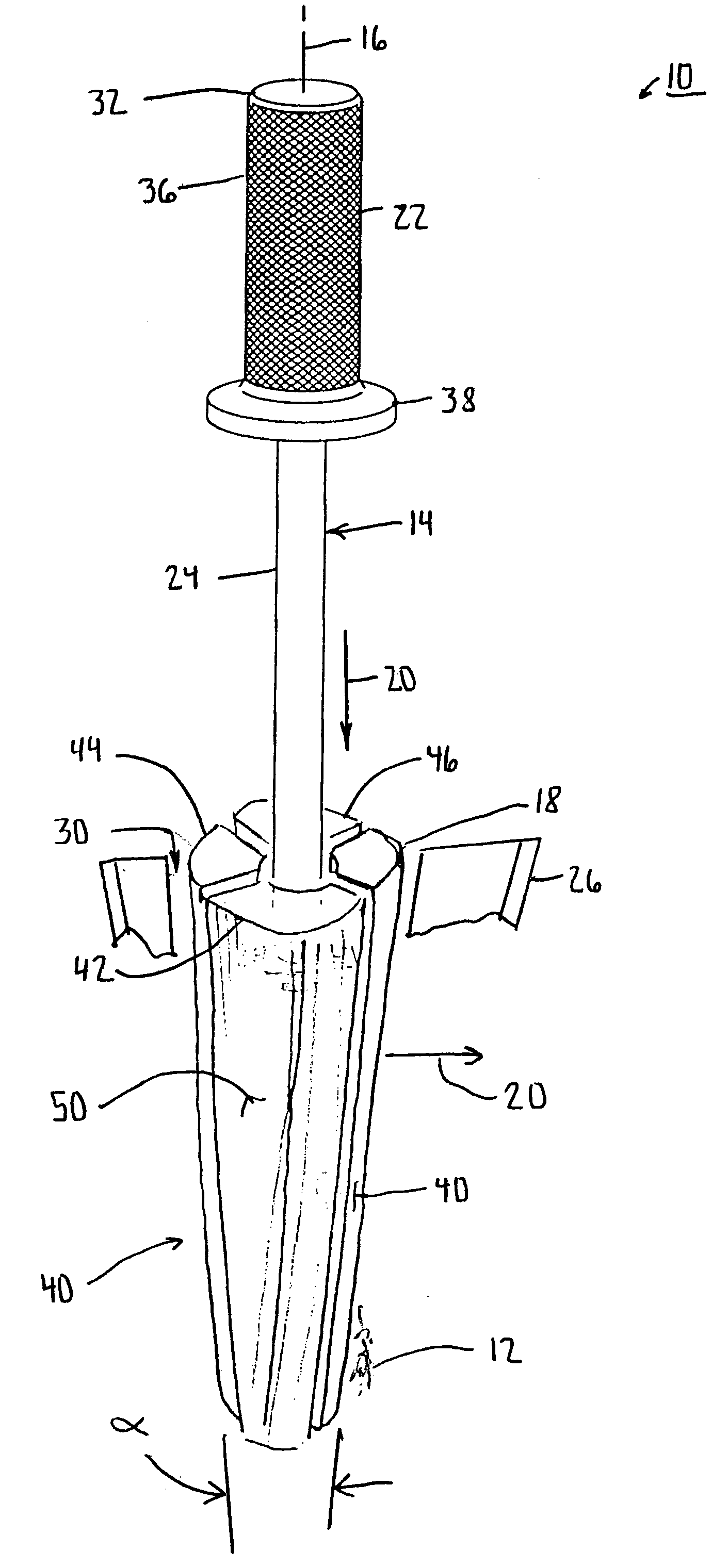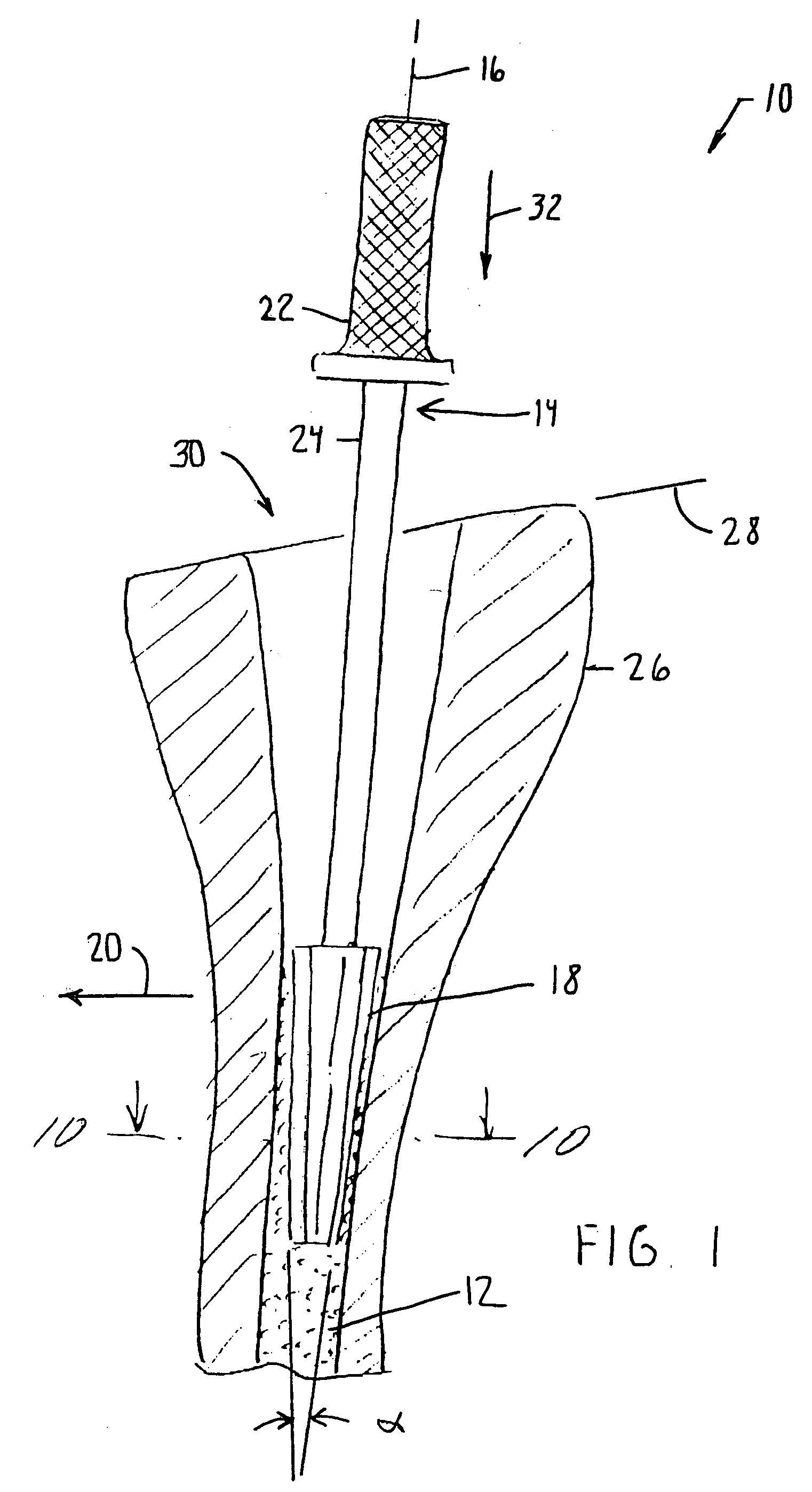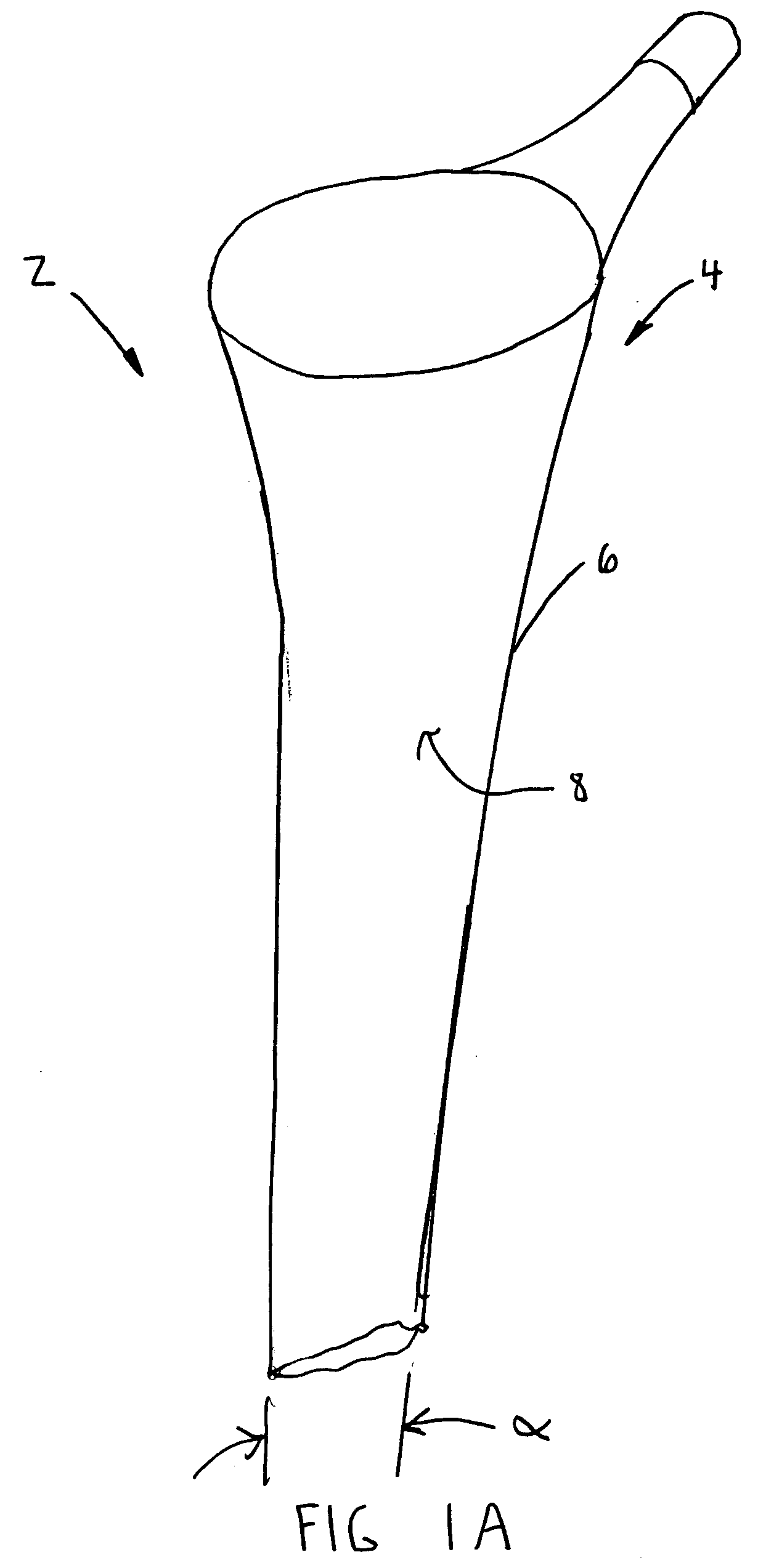Radial impaction bone tamp and associated method
a radial impaction and bone graft technology, applied in the field of orthopaedics, can solve the problems of stress on joints or damage to joints in the body, wear and tear of cartilage, and damage to bones, cartilage or other connective tissue such as tendons or ligaments, and achieve greater radial impaction force, improve the compaction of bone graft material, and improve the effect of radial impacting for
- Summary
- Abstract
- Description
- Claims
- Application Information
AI Technical Summary
Benefits of technology
Problems solved by technology
Method used
Image
Examples
Embodiment Construction
Embodiments of the present invention and the advantages thereof are best understood by referring to the following descriptions and drawings, wherein like numerals are used for like and corresponding parts of the drawings.
According to the present invention and referring now to FIG. 1, an instrument 10 for compacting bone material 12 is shown. The instrument 10 includes a first component 14 defining a longitudinal axis 16 of the first component 14. The instrument 10 also includes a second component 18 which is moveably associated with the first component 14. The second component 18 is moveable at least partially in a radial direction 20 outwardly from the longitudinal axis 16 of the first component 14.
The first component 14 may, for example, include a body 22 and a stem 24 extending from the body 22. The second component 18 may, for example, be slidably mounted to the stem 24.
The instrument 10 may be configured, for example, such that the first component 14 or the second compon...
PUM
 Login to View More
Login to View More Abstract
Description
Claims
Application Information
 Login to View More
Login to View More - R&D
- Intellectual Property
- Life Sciences
- Materials
- Tech Scout
- Unparalleled Data Quality
- Higher Quality Content
- 60% Fewer Hallucinations
Browse by: Latest US Patents, China's latest patents, Technical Efficacy Thesaurus, Application Domain, Technology Topic, Popular Technical Reports.
© 2025 PatSnap. All rights reserved.Legal|Privacy policy|Modern Slavery Act Transparency Statement|Sitemap|About US| Contact US: help@patsnap.com



